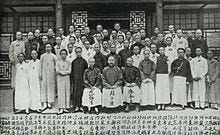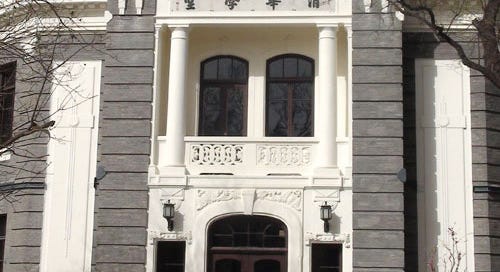Episode III: Tsinghua University. From Rebellion to Reform: the Boxer Indemnity Scholarship Program
How China's leading education institution was born from US-China diplomacy
In the early 20th century, few would have predicted that one of China’s most prestigious universities would emerge from Sino-US conflicts. Yet, Tsinghua University, a leading institution recognized worldwide today, owes its origin to an unlikely source: indemnity payments China paid to the U.S. in the wake of the Boxer Rebellion and later repatriated back to China.
Fast forward 100 years. Tsinghua’s founders likely could not have foreseen that the university would once again be entangled in Sino-U.S. tensions. This time, the university—created as a school to prepare Chinese students for studying in the U.S.—is caught in the crossfire of the greater power rivalry, facing student visa restrictions and technology controls.
In this post, we’ll explore how China’s leading educational institution was born from diplomacy—a story familiar to many Chinese and Chinese specialists but lesser-known to most Westerners.
As discussed in our Post 1 of the Series, the Boxer Rebellion led to significant losses for foreign nationals and missionaries. In response, the Eight-Nation Alliance—including the United States, Japan, and several European powers—demanded reparations from China, amounting to over $300 million.
However, in a surprising diplomatic move in part motivated by the goal of initiating an “American-directed reform” in China, President Theodore Roosevelt decided that the U.S. would return a portion of its share of the indemnity to China, using the funds to establish the Boxer Indemnity Scholarship Program. The program would fund young Chinese students to study in U.S. universities (read our second post to learn more).
"This group of students would be able to insure a peace and trade in the Far East that treaties and military forces cannot insure.”
-- Liang Cheng, Chinese ambassador to the U.S.
To facilitate the education exchange, Tsinghua College was established in 1911 as a preparatory school to prepare Chinese students for American universities. This small institution with modest goals later transformed into an educational powerhouse that would shape China’s intellectual and political landscape for generations.
Located on the outskirts of Beijing, Tsinghua College initially served as a two-year preparatory school for some of the best and brightest students selected from a rigorous process. The school enrolled only around 50 students in its first cohort and offered a curriculum that combined traditional Chinese teaching with Western subjects, taught in both English and Chinese. This cross-cultural training was crucial for those students who would soon find themselves navigating an entirely different world.

However, Tsinghua’s purpose soon evolved beyond preparing students for foreign universities. In the 1920s, Tsinghua College expanded its offerings and formally became Tsinghua University. This shift marked a turning point in its mission, as it began offering complete degree programs and became a center for research and intellectual growth. The student population had grown to over 300, with expanded academic programs in sciences, engineering, and liberal arts. Over the 20 years after its establishment, the program sent around 1,300 students to study abroad.
During the Chinese Civil War and the Japanese invasion, Tsinghua moved its operations, along with Peking University and Nankai University, to Kunming, where they formed the National Southwestern Associated University. In this temporary location, over 3,000 students were enrolled, many of whom were Tsinghua students.
After World War II and the Sino-Japanese War, Tsinghua returned to its original campus in Beijing. The university resumed its regular operations, focusing on rebuilding and expanding its programs. With the founding of the PRC in 1949, Tsinghua, like other universities in China, underwent major ideological and structural changes, reorienting its curriculum toward science and engineering and firmly establishing itself as one of China’s foremost universities.
Today, as Tsinghua confronts the tensions of U.S.-China relations, its transformation from a modest preparatory college funded by Boxer Indemnity scholarships into a globally renowned institution serves as a reminder of how diplomacy and education can intersect to shape history.
Thank you for reading our posts. Hope to see you again soon!
- Ethan




